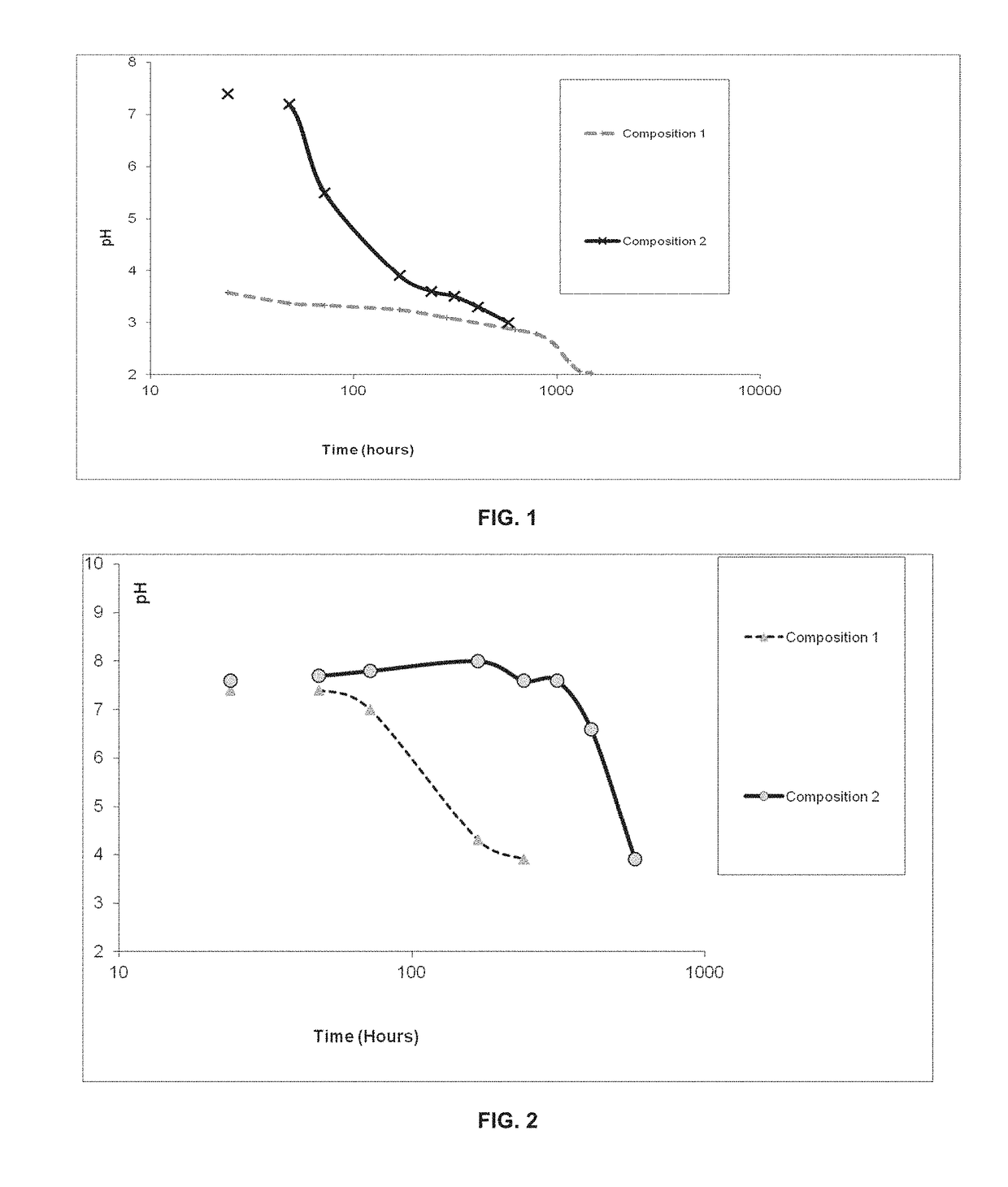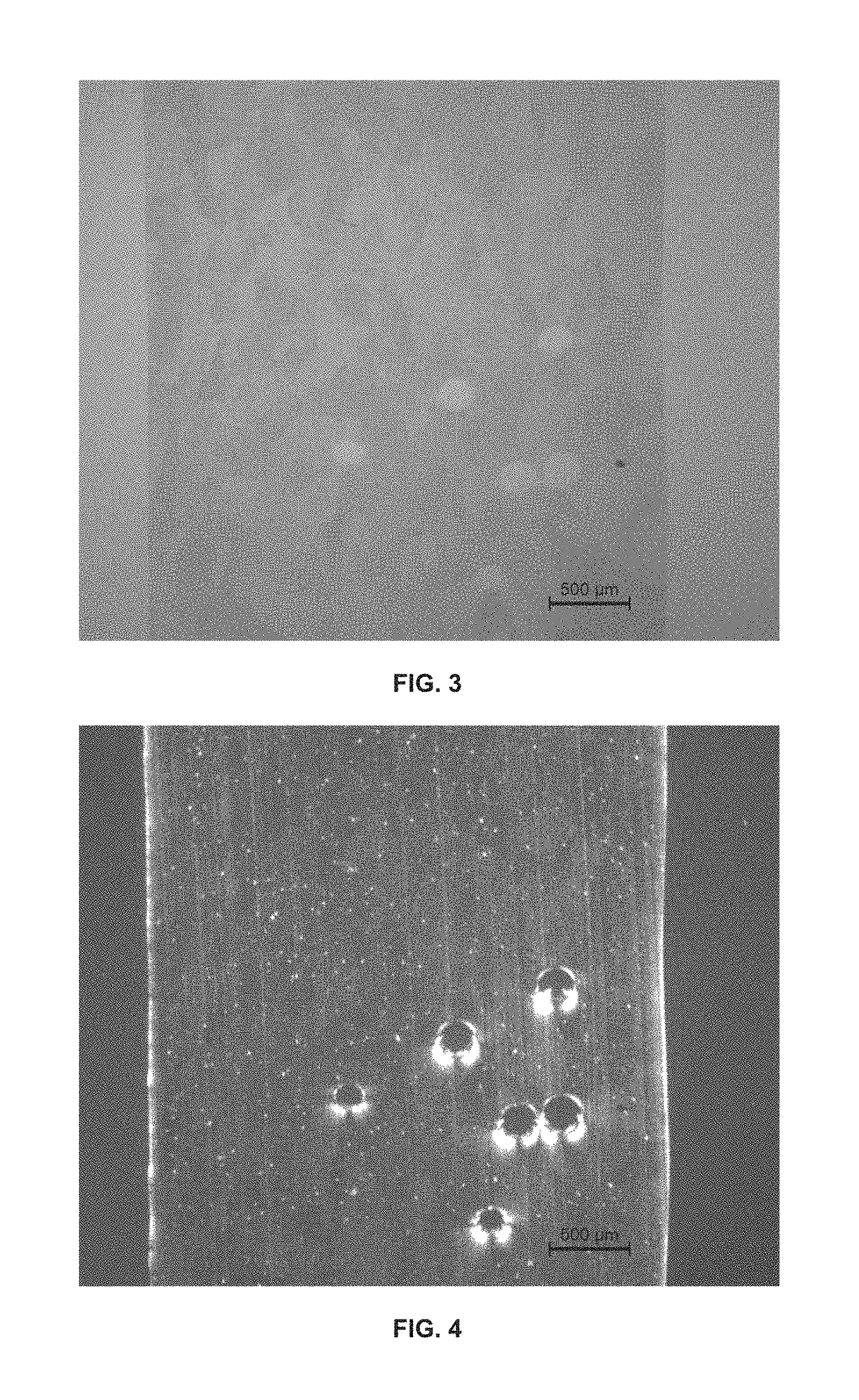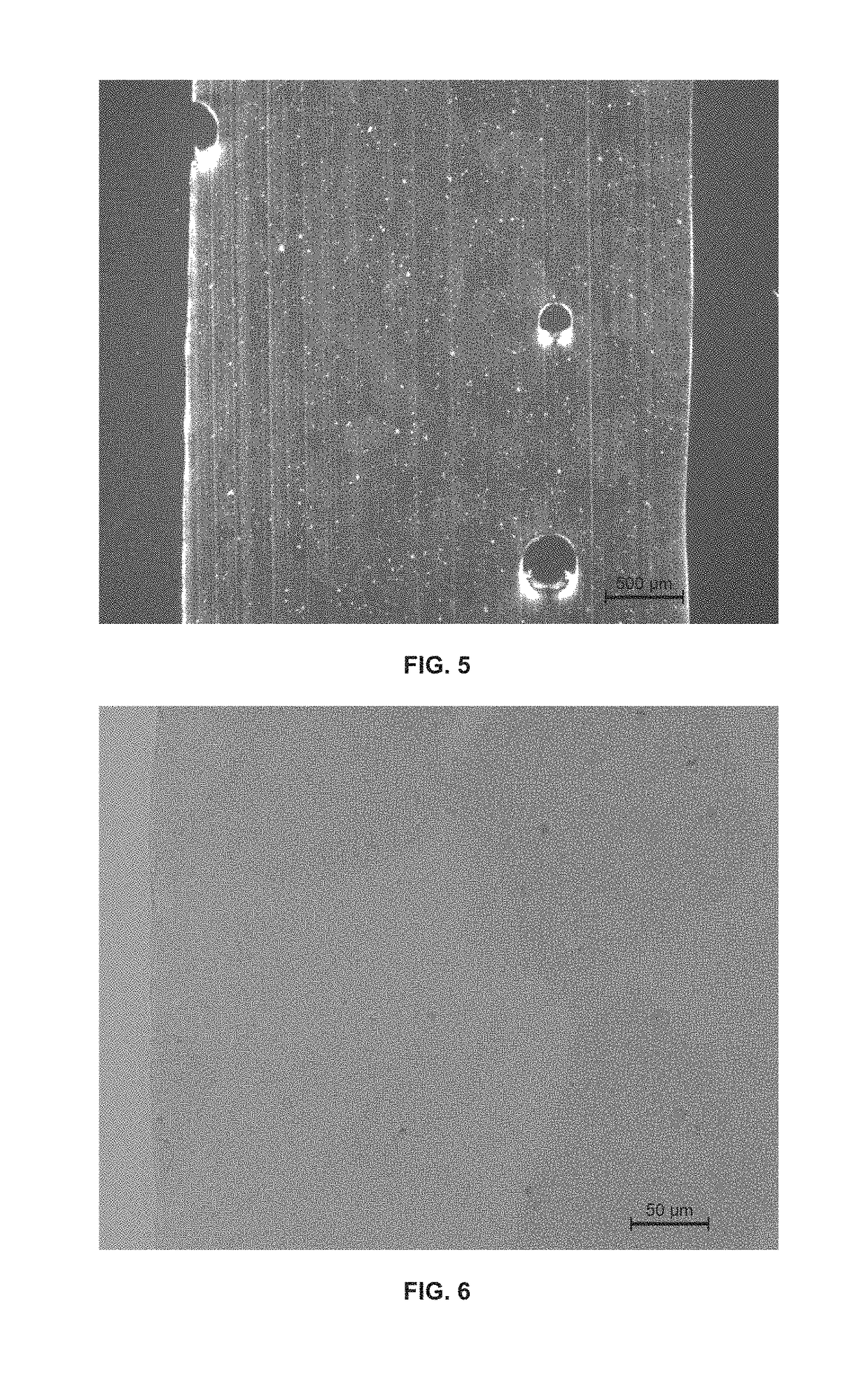Rotomoulded articles
a technology of rotomoulded articles and polyolefin, which is applied in the field of polyolefinand polyestercomprising rotomoulded articles, can solve the problems of increasing the duration of the production cycle, non-uniform wall thickness, and reducing the production efficiency of the product, so as to reduce shrinkage and/or warpage, improve impact strength, and improve mechanical properties
- Summary
- Abstract
- Description
- Claims
- Application Information
AI Technical Summary
Benefits of technology
Problems solved by technology
Method used
Image
Examples
example 1
Resins Used in the Examples
[0349]The resins identified hereafter were used:
Polyolefin
[0350]As the polyolefin, a polyethylene resin was used, more particularly M4041 UV® from Total Petrochemicals. The white polyethylene powders were obtained after grinding the polyethylene pellets. The polyethylene having a density of 0.940 g / cm3 (ISO 1183) and melt index MI2 of 4 g / 10 min (ISO 1133 condition D under a load of 2.16 kg at 190° C.). The average particle size of the powder after grinding is of 300 μm. The polyethylene was prepared with ethylene bis(tetrahydroindenyl) zirconium dichloride catalyst. The tensile modulus is around 800 MPa measured according to ISO527.
Polyester
[0351]As the polyester a PLA was used, namely a poly-L-lactide (PLA HIGH PURITY from Futerro®) in the form of powder obtained after grinding pellets of PLLA having an optical purity of at least 99% w / w, a water content of maximum 250 ppm, free lactide content of maximum 0.1% w / w and a number average molecular weight Mn...
example 2
s Test
[0404]10 g of the compositions 1 and 2 as prepared in Example 1, were each separately placed in water at 60° C. The pH of the obtained suspension was recorded as a function of time. A first test was performed using double distilled water; the results are shown in FIG. 1. A second test was performed using standard tap water; the results are shown in FIG. 2. pH below 7 points out PLA hydrolysis (Lactic acid production).
[0405]From FIGS. 1 and 2, it can be seen that the presence of ionomer in the composition 2 has a slowing effect on the pH reduction, when compared to composition 1. The blend used to prepare layer A according to the invention have the advantages of preserving the PLA present in the blend from hydrolysis. The presence of an ionomer (Surlyn®) therefore also improves the resistance of the composition to hydrolysis.
example 3
[0406]Composition 1 and composition 2 as mentioned in Example 1 were used separately to form bottles as described in Example 1. The dispersion of the PLA nodules in the PE matrix was assessed on microtomed cross-sections of the samples using bright field (BF) illumination, and polarized light (PL), using an Olympus BH2 microscope fitted with a digital camera. The results are shown in FIGS. 3 to 16.
[0407]From FIGS. 3 to 11, it can be seen that the cross-sections of the sample are showing a uniform spherulitic structure. Some voids are observed in the sample.
[0408]From FIGS. 12 to 16, it can be seen that the cross-sections of the sample are showing a uniform spherulitic structure with an average spherulitic size of 12.2±0.5 μm. Some voids are observed in the sample.
[0409]When comparing FIGS. 3 to 11 with FIGS. 12 to 16, it is clear that for sample prepared using composition 1 > of PLA are observed, as well as a bad dispersion. The samples prepared with composition 2 are more homogeneo...
PUM
 Login to View More
Login to View More Abstract
Description
Claims
Application Information
 Login to View More
Login to View More - R&D
- Intellectual Property
- Life Sciences
- Materials
- Tech Scout
- Unparalleled Data Quality
- Higher Quality Content
- 60% Fewer Hallucinations
Browse by: Latest US Patents, China's latest patents, Technical Efficacy Thesaurus, Application Domain, Technology Topic, Popular Technical Reports.
© 2025 PatSnap. All rights reserved.Legal|Privacy policy|Modern Slavery Act Transparency Statement|Sitemap|About US| Contact US: help@patsnap.com



